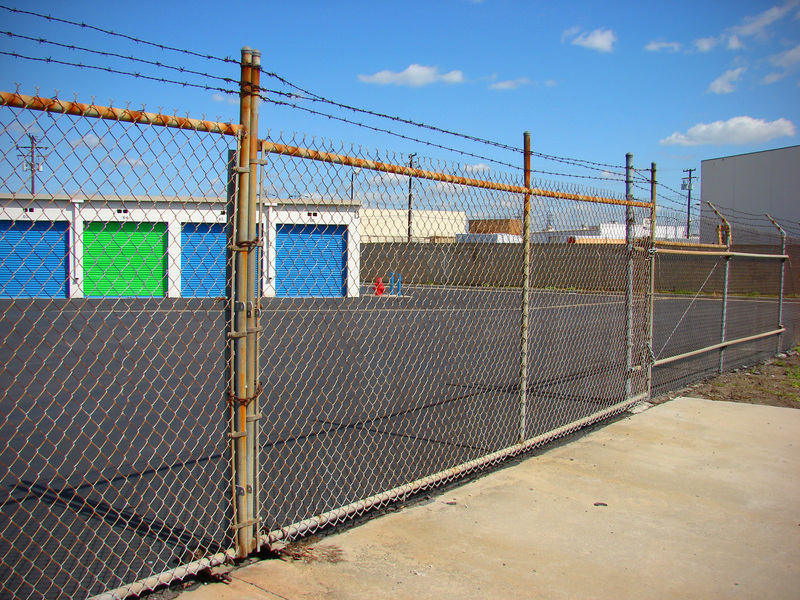Essential Tips for Transporting Your Bed and Mattress
Posted on 22/06/2025
Essential Tips for Transporting Your Bed and Mattress: The Ultimate Guide
Moving to a new home or rearranging your current living space? Among all your household furnishings, beds and mattresses present particular challenges when it comes to safely and efficiently moving them. Whether you're DIY-ing your move or hiring professionals, properly transporting your bed and mattress ensures their longevity, comfort, and cleanliness. In this comprehensive guide, you'll discover everything you need to know about effectively relocating your bed and mattress without a hitch.

Why Is Proper Mattress and Bed Transportation Important?
When planning your move, it might be tempting to toss your mattress and bed frame into the moving truck and call it a day. However, improper handling can lead to:
- Permanently damaged mattress springs or foam
- Tears, stains, or soiling
- Broken bed frames or warped slats
- Unanticipated extra costs for repair or replacement
- Pest infestations or lingering odors
With the right knowledge and tools, you can avoid these issues and extend the life of your sleep investments.
Preparing Your Bed and Mattress for Transport
1. Gather Essential Supplies
Before you move anything, ensure you have the following:
- Mattress bag or plastic wrap - for protection against dust and moisture
- Moving blankets or pads - to cushion and protect frames and headboards
- Ratchet straps or strong rope - for securing large or awkward components
- Basic tool kit (screwdriver, wrench, Allen keys) - for disassembling the bed frame
- Labels and plastic bags - for keeping hardware organized
Having these supplies ready will make the transportation of your mattress and bed frame much smoother and more efficient.
2. Clean Before You Move
Don't trap dirt in transit! Take this chance to thoroughly vacuum and spot-clean your mattress and dust your bed parts. A clean start means a clean arrival in your new space.
3. Disassemble Your Bed Frame
Most beds are too large or awkward to move in one piece. Follow these steps:
- Remove all bedding, pillows, and covers.
- Take the mattress and box spring off the bed frame.
- Disassemble the frame, slats, headboard, and footboard as per the manufacturer's instructions.
- Keep all screws, nuts, bolts, and small hardware in labeled plastic bags. Tape these bags to major components so you don't lose them.
Expert tip: Take photos as you disassemble to assist with reassembly later.
4. Protect and Wrap Your Mattress
Use a heavy-duty mattress cover or plastic sheeting to wrap your mattress and box spring.
- This guards against dirt, moisture, and pests during the move.
- Seal any openings with strong packing tape.
Bonus tip: Specialty mattress bags are affordable and available at home improvement stores - invest in one for maximum protection.
5. Wrap Bed Frame Parts
Each piece of your bed should be wrapped with moving blankets or thick towels.
- Pay special attention to corners, woodwork, and painted finishes.
- Secure coverings with tape or rope, but avoid taping directly onto wood or finished surfaces.
Best Practices for Transporting Your Bed and Mattress
1. Can You Bend or Fold a Mattress?
Most mattresses--especially memory foam or latex--should not be bent or folded. Bending them risks warping the internal coils or foam, permanently damaging comfort and support. Some thin foam mattresses may temporarily bend for short distances, but always consult the manufacturer's guidance. When in doubt, keep your mattress in its natural, flat shape during transport.
2. Positioning the Mattress in Your Vehicle
Choose the vehicle size based on your mattress:
- Twin/full mattresses: May fit in large SUVs or vans, but measure first.
- Queen/king mattresses: Nearly always require a moving truck or pickup.
Always lay your mattress flat during transport to avoid internal damage. Standing it on its side for short periods is acceptable, but not recommended for long distances.
Important: Never strap the mattress to the top of your car. It's unsafe, threatens road safety, and may violate local laws.
3. Securing Your Mattress and Bed Frame in Transit
- Secure mattresses, box springs, and frame parts using ratchet straps or rope.
- Prevent movement by tightening straps and immobilizing everything.
- Keep heavy items away from fragile woodwork to avoid dents or scratches.
Pro tip: Place the mattress against a flat surface in the vehicle, such as the truck or van wall, to reduce shifting.
4. Lifting and Carrying Tips
- Recruit a friend or helper. Mattresses and bed frames, especially kings and queens, are heavy and awkward.
- Bend at the knees and keep your back straight when lifting to avoid injury.
- Use moving straps or a mattress sling for better control.
Never drag your mattress on the floor - this causes tears, soiling, and damage to the fabric.
Unloading and Reassembling Your Bed and Mattress
1. Clean and Prep Your New Space
Before unwrapping, make sure your new bedroom is clean and dry. This keeps your mattress fresh and sanitary.
2. Reassemble with Care
- Follow the reverse of your disassembly steps, using your labeled hardware bags and photos as reference.
- Tighten all screws and bolts securely to avoid wobbly frames.
3. Mattress Freshening
- Allow the mattress to air out for several hours before making the bed, especially if wrapped in plastic during transit.
- Spot-clean any new marks or dust before adding bedding.
Frequently Asked Questions About Moving a Bed and Mattress
Can I Transport a Mattress by Myself?
It's technically possible, especially for small twin or full-size mattresses, but it's much safer and easier with help. Mattresses are bulky and can block your vision or cause strain injuries if mishandled.
Should I Hire a Professional Mattress Moving Service?
For local moves, many people successfully transport mattresses themselves by following these tips. However, if you have:
- Expensive or delicate mattresses
- Stairs or limited vehicle space
- Long-distance or interstate moves
...it may be wise to consult a professional mover. They have the expertise and equipment to ensure a safe delivery.
How Do I Move a Bed and Mattress in the Rain?
Weatherproof protection is essential! Use heavy-duty, waterproof mattress bags. Double-wrap if necessary, and keep your items inside the vehicle or under secure, waterproof tarps. Always dry everything thoroughly once inside your new home to prevent mold and mildew.
Can I Store My Mattress Upright?
For short periods (hours to a few days), storing a mattress upright is okay. For longer storage, always keep it flat to maintain its shape and support structure.

Expert Advice: Mistakes to Avoid When Moving a Bed and Mattress
- Skipping mattress protection: Even a quick trip can result in costly stains or tears.
- Forgetting to label hardware: Reassembly becomes a headache without organized screws and bolts.
- Bending or folding non-foldable mattresses: This can ruin the internal structure of most mattresses.
- Stacking heavy items atop your mattress: Prolonged pressure damages springs and foam, ruining comfort.
Conclusion: Move Your Bed and Mattress Like a Pro
Transporting a bed and mattress is a critical part of any successful move. With forethought and the right materials, you can avoid common pitfalls and ensure your mattress remains clean, supportive, and lasts for years to come.
Key points to remember:
- Disassemble and protect every component.
- Use mattress covers and moving blankets.
- Secure everything inside your transport vehicle.
- Lift safely and don't hesitate to ask for help.
Whether you're using a professional service or going the DIY route, these essential tips for transporting your bed and mattress will help you transition smoothly, free from damage or extra costs. Take your time, plan ahead, and enjoy a fresh start in your new space--complete with a bed that's as comfortable as ever!



